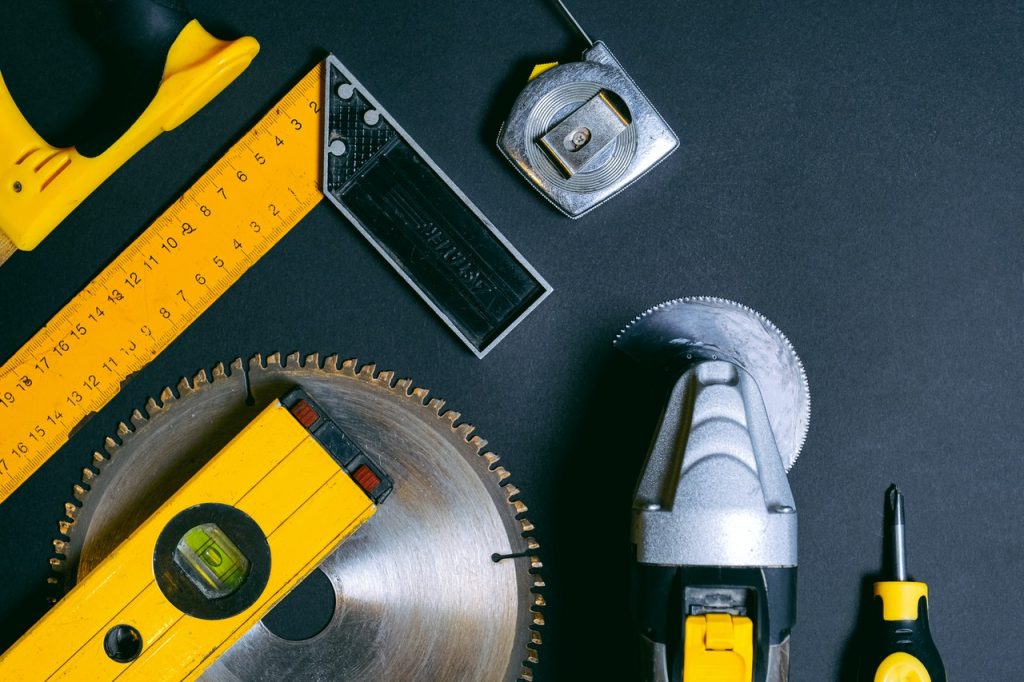Do you own a miter saw that has lost its effectiveness? If the answer is yes then there’s a chance that the blade of your miter saw is either damaged or gone dull.
If this is the case then you must replace the blade. Thankfully, this is a facile and simple process. You will be requiring a few tools and only a couple of minutes for this.
Stick around to learn in detail the proper ways of changing miter saw blades.
Quick Summary
The following information will be covered in the article:
- How to change miter saw blades safely
- Why change a miter saw blade
- Tips to make your miter saw blades last longer
How to Change a Miter Saw Blade Carefully
Since there are many brands of miter saws available in the market, each saw requires a different method for the blade to be changed. However, here’s a general guide to assist you in changing the blade safely.
Quick steps to change a miter saw blade:
- Unplug the saw from any power source
- Press the spindle lock and loosen the bolt
- Remove the blade from the saw
- Position the new blade on the saw
- Press the spindle lock and tighten the bolt
A detailed review of how to change a blade effectively
The tools required for changing a miter saw blade are:
- Allen wrench
- Socket set
- Phillips-head screwdriver
Step 1
Firstly, you should make sure that the miter saw is disconnected from the power supply. Then you need to remove the spindle cover. Rotate the blade guard to the top and remove the bolt of the spindle cover.
Step 2
Remove the blade from the miter saw. Then hold the spindle lock and make sure that the spindle pin is fully locked.
If you are unable to fully lock the spindle then use a wrench to turn the spindle and apply some pressure to it.
Step 3
After all this is done, you can safely change the blade of the miter saw. Remove the oil from the inner and the outer washers. To position the blade in the precise direction refer to the direction arrows printed on the blade.
Make sure that the new blade attached has its teeth faced downwards.
| Pro Tip: Use your fingers to firmly attach the outer washer back on the saw for a firmer grip. |
Step 4
Press the spindle lock and refasten the bolt on the saw using a wrench. Keep in mind that the bolt would be tightened by using the wrench in a counterclockwise motion.
Lastly, attach and tighten the blade guard to your miter saw using a screwdriver and lower it.
Important notes to be kept in mind: Before turning on the miter saw again make sure that the spindle lock is properly disengaged with the wrench. The blade bolt cover should be tightened once again too to make sure that it is placed correctly.
To guarantee accurate smooth cuts you must check and make sure that the fence is square to the blade while the blade is square to the table.
Why Should you Change a Miter Saw Blade?
There can be a number of reasons why one must change the blades of their miter saw. After constant use, the blades can go dull or even be damaged. You may have a wood cutting blade but your next project demands cutting of other stronger materials.
Or you could have a blade with fewer teeth that is good for cutting fast, but now you need to work on something that needs more finesse.
How to find a dull blade?
When the cutting quality of the blade is no longer acceptable, it’s time to change the blade as it has become dull. An old blade produces wavy and untidy cuts. This not only wastes your time but also ruins the material you are working with.
Another way to find a dull blade is to pay close attention to the sound of the motor and the blade. If the miter saw machine is producing too much noise it can mean the blade is dull since it requires more power now to cut the same amount of material.
How to differentiate between a dull and a dirty blade?
An old blade producing low-quality cuts does not necessarily mean that it has gone dull. Sometimes the wood pitch is collected on the blade which affects the quality of the cuts. This can easily be cleaned with a solution and the blade will start giving smooth cuts again.
Different blades for different materials
Another reason to change your saw blade is that each blade is designed specially to cut a specific material. If for example, you have to cut wood you need a blade designed to cut wood, and similarly, if you have to cut metal you need a blade designed to cut metal.
Number of teeth on a blade
The cutting quality of a blade depends a lot on the number of teeth. If you have a blade with lower teeth but now you have to work on something that requires more finesse, you now will need a blade with a higher number of teeth.
What is the use of a blade with a higher number of teeth?
A blade with more teeth is called a crosscut blade. These blades cut across the grain of the wood. The higher tooth count ensures that the cuts are very smooth and in place. These blades remove sawdust and are ideal for working on furniture that needs a lot of finesse.
What is the use of a blade with a lower number of teeth?
A blade with a lower tooth count is called a ripping blade. These blades have a large space between the teeth known as gullets. This helps in removing the material very quickly as the strings of wood are removed.
However, one disadvantage of this miter saw blade is that it produces very rough and choppy cuts.
Tips to make your blade last longer
If you want your miter saw blade to last longer and stay sharp you need to take very good care of it. Bolts and screws of miter saws can often go wrong. Common problems these miter saws can cause include rust and corrosion.
Use the correct blade
If you are using a miter saw blade designed for wood with a different material it will cause the blade to go dull very quickly. You will also need to resharpen your blade more often, which requires extra effort and money.
We recommended that before buying a blade do proper research on your work and the material you will be working with. This will not only give you better results but also not require you to change the blade often.
Properly install your blade
Proper installation of a blade is very simple but still requires a lot of attention to detail. You need to make sure that there is no debris between the spindle, the blade, and the flange when you change the blade. A dirty flange can cause the material to slip away.
In addition to this, like we mentioned before you need to ensure the main blade bolt of your saw is fixed firmly using a blade wrench. The rest of the screws and bolts should also be firmly in place before you plug in the saw in a power source.
Let the blade do its work
Before working on material you must know the proper force required to cut. Doing this by not forcing the blade on the material will increase the life of the blade plus give you extraordinary results.
Applying extra pressure does not yield faster or better cuts, it only adds unnecessary stress to the blade.
What do you need to know to get the best results out of your saw?
It is essential that you carefully listen to the noise of your saw to understand its RPM. Moreover, you must also understand the cut feed options, the feed rates, and the chip load of the saw to get the best possible results.
Lubricate the blade
A miter saw can work without lubrication however, it is highly recommended that you lubricate your saw blade for better performance.
Using proper lubrication reduces the stress on the blade as now there is less friction between the blade and the material.
Lubrication aids in removing chips which helps in stopping the material from getting stuck with the blade.
Important: If you fail to do the steps mentioned above correctly, you will not only cause the blade to get damaged but also cause extra friction which generates a lot of heat build-up
How to apply lubricant on the saw blade?
It is preferred that you use a not sticking lubricant on your saw blades to prevent rust build-up.
The first step is to apply a light coat of lubricant to the blade. Then use a paper towel or soft cloth to buff it onto the surface. Lastly, wait for a couple of minutes and your blade is now ready for cleaner smooth cuts.
Proper cleaning of the blade
Proper cleaning and maintenance of your saw blade are essential. If you have a dirty saw blade, it will not only decrease the quality of the cuts but also cause the saw to work harder to make each cut.
This proper cleaning ensures that pitch and resin do not build up on the saw blade. The saw would also require less horsepower now for the same amount of work and also holds the blade in place.
What is the proper way to clean the saw blade?
Use a cleaning spray for your saw blade. Spray it gently on both sides of the blade and then let it sit for half an hour. Then wipe it off using a paper towel.
On the other hand, if you still see some dirt on the saw then you may require a toothbrush to remove the extra bit of dirt out.
Wrapping Things Up
You now have learned the proper way to change a miter saw blade. You must take extra care of your miter saw blade so it stays sharp for a longer period of time and gives amazing results. This way you won’t have to worry about changing them often.
In addition to this, you have also learned the difference between a dirty and dull blade.
With this, we conclude our article on how to change a miter saw blade.
We hope the information we provided was useful to you. Do let us know your reviews.

